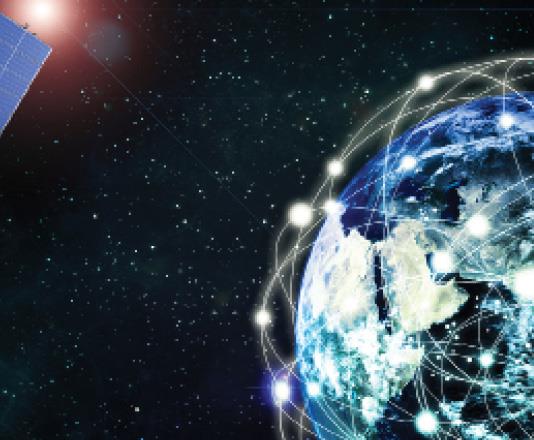04 October 2021

Martin Jarrold, chief of international programme development, GVF
Since I last wrote for this column referencing the GVF-SEG webinar production partnership, our global membership continues to be represented on various webinars featuring in both the main GVF-SEG online events series (live and on-demand) and in programmes featuring GVF-organised panel discussions as streamed embedded content within third-party conferences and exhibitions.
The digital divide, long characterised only as an issue for low and middle-income developing nations is, as a result of the impact of the Covid-19 pandemic, now recognised as being of wider concern even for developed nations. For developing nations the emphasis in bridging the divide must be on both the availability of connectivity and its affordability, whereas for developed countries the greater weight of concern relates to availability, less so on affordability. Developed nations have their remote region connectivity gaps too. Whilst satellite has long been correctly seen as a means of solving the connectivity problem as it can be deployed anywhere, and its coverage is ubiquitous, there are many fundamental questions directed towards understanding the principal barriers to serving those on the wrong side of any digital divide, and if you want answers to such questions as these…
- What are the unique requirements of businesses on the other side of the divide as compared to the requirements of individuals?
- The complaint about satellite communications has long been its cost. Is that still a valid complaint from the perspective of businesses? From that of individual consumers?
- Do universal service funds and the like help bridge the divide?
- What would you ask of regulators who are charged with bridging the divide in their country?
- Is there a role for satellites to provide solutions to businesses and communities on the other side of the divide in urban settings?
- What developments in terms of services, products, and costs will we see in the next five years that will help bridge the divide?
- Will the roll out of 5G networks help bridge or widen the divide?
- LEO and MEO systems offer lower latencies compared to GEO systems. Is that an issue when providing connectivity to businesses and communities on the other side of the divide?
- Community Wi-Fi is one way to bring affordable connectivity to remote and often relatively poor communities. Please comment on this and about other services that similarly address the needs of such communities.
Additionally, you can read a write-up of the panel discussion in Via Satellite’s ‘Satellite Today’ entitled Satellite Players Say Government USOs Key to Bridge Digital Divide.

The role played by satellite communications networks following disasters and in preparing for disasters is crucial. Satellite’s ground and space segment capabilities in providing quickly available, quickly deployable, rugged, self-contained, in-field, user-friendly global communications links for disaster-affected regions is an imperative driven by the needs of first responders when terrestrial telecommunications infrastructure is destroyed or compromised by increased demand and traffic. Disaster response has taken on a new connotation since Covid-19. The pandemic has brought into even finer focus the critical role of satellite following disasters, highlighting the tragedy of how disasters often disproportionately impact the most vulnerable. This webinar answers such questions as, “The satellite industry has signed an agreement with the UN’s World Food Programme, the Crisis Connectivity Charter. What does this agreement provide?” Tune in to the video on-demand using the link above to find the answers to this and other questions, such as:
- If Satellite networks are so well equipped to respond to disasters, should they only be used in case of emergency?
- Studies have shown that the return on investment for disaster preparedness is at least four times greater than the ROI for disaster response. When it comes to restoring communications, what should governments do to better prepare for disaster in terms of training, purchasing, and maintaining equipment, and other forms of preparedness?
- When a disaster destroys cell towers and satellite antennas, and cables are cut, the need to quickly deploy satellite terminals becomes critical. Given the wide range of competencies, easy to transport, operate and maintain terminals are vital. What advice would you give disaster responders which are looking to purchase such terminals for future operations?
- There are man-made disasters that impact communications such as cyber-attacks. Are satellite networks something governments should be concerned about when planning for, or responding to, such man-made disasters or are satellite networks resilient to such man-made disasters?
Finally, until the next time, wherever you are whilst reading these words… Keep well, stay safe.







